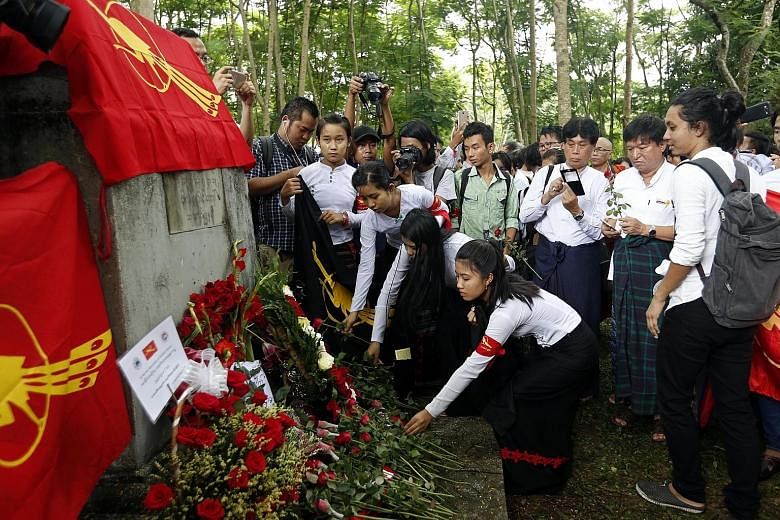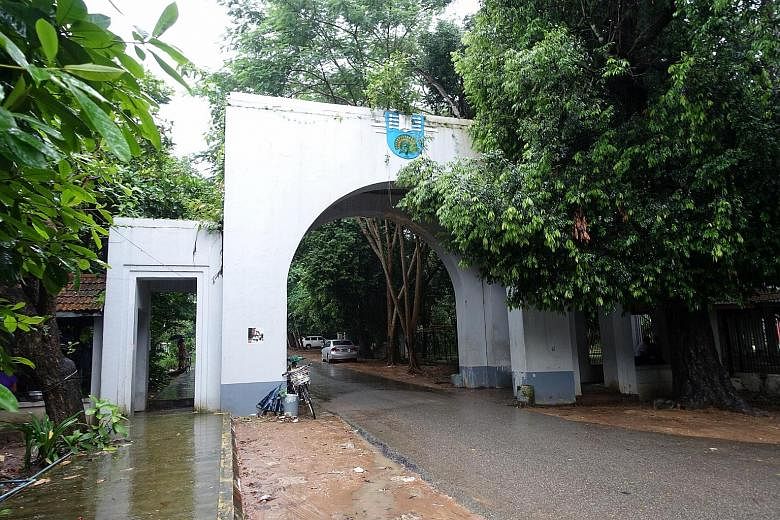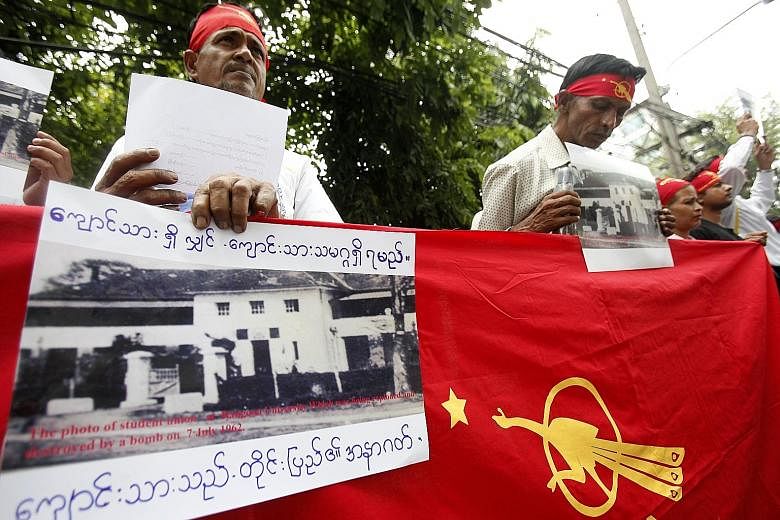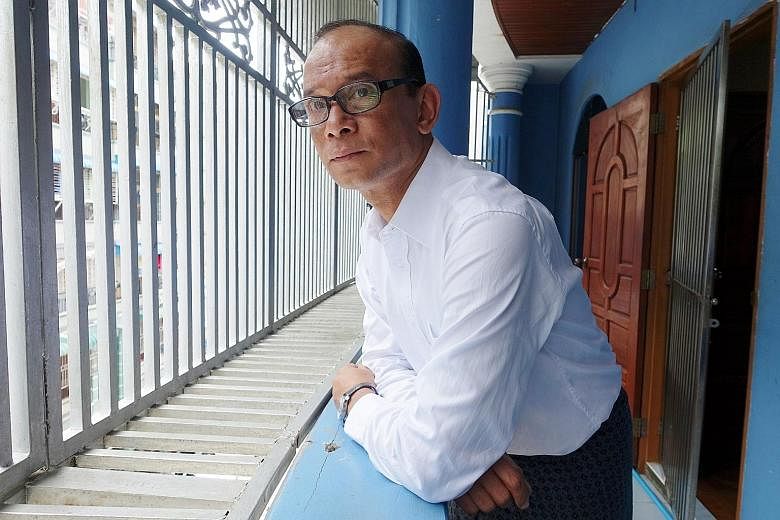On days when a lull in the monsoon rain brings people out into the sun, young women in bright blue longyi, which are like sarongs, cavort in the shadow of a colonial-era church at Myanmar's oldest university.
This manicured lawn at the University of Yangon sometimes doubles as a meeting ground for its students' union, made itinerant under five decades of military rule.
"In my first year of study, we had to hold some meetings in front of the church, or sometimes in the canteen," says 18-year-old Win Lwin Aung, a sophomore who sits on the union's executive committee.
"We can't host a meeting with other students' unions. We have to travel to other universities."
This week, the union was finally allocated a temporary office. Myanmar's new civilian government has also set aside 5.2 billion kyat (S$5.3 million) to erect a new students' union building - in what observers hope will begin a process to account for the dozens of student activists killed over the past decades, as well as reconcile the nation with its former military rulers.
It was at the university, on July 7, 1962, that students rose up against a military government newly installed by a coup. Soldiers sent in to quell the protest opened fire. More than 100 people are said to have died, even though officials put the figure at 15.
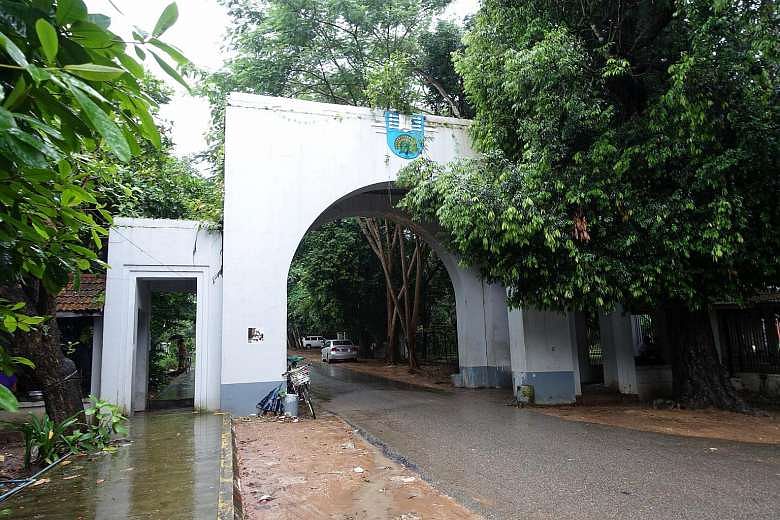
In the early hours of July 8, the military blew up the students' union building with dynamite.
-
Legacy of political activism
-
YANGON • The University of Rangoon was established in 1920 while the country, then known as Burma, was under British rule.
Until the 1950s, it was seen as a prestigious institution in South-east Asia, attracting local elites and foreign scholars. Many of its students went on to agitate against colonial rule.
U Nu, who became the first prime minister of an independent Burma, served as president of the Rangoon University Students' Union in the 1930s.
Likewise, Aung San, the father of Myanmar's de facto leader Aung San Suu Kyi, helmed the union as an undergraduate.
In 1989, the government changed the country's name from Burma to Myanmar. Rangoon became known as Yangon.
Despite military repression, student leaders continued to feature prominently in Myanmar's political life.
Tan Hui Yee
DEEPLY SYMBOLIC DEMOLITION
The demolition was deeply symbolic: Rangoon University - the university's former name - was then one of the most prestigious universities in Asia. Its students' union was a hive of political activity, bringing together future national leaders, who agitated against colonial rule and then later military repression.
Among the union's former presidents were independence hero Aung San - the father of Myanmar's current de facto leader Aung San Suu Kyi - and U Nu, the first prime minister of Myanmar.
Levelling the building "not only destroyed" it, explains 36-year-old political activist Moe Thway. "It destroyed the spirit of the people, and destroyed the democratic practice and institution. It also laid a great foundation of fear in the country."
What followed next decimated the university. Its mode of instruction was changed from English to Burmese. Various faculties, such as medicine and economics, were hived off to form separate institutions. The once-bustling, leafy campus fell silent as undergraduates were shut out and students' unions driven underground.
The military regime, fearful of the threat posed by students massing in urban centres, created new universities on the outskirts. It offered distance-based learning programmes, and shuttered institutions during periods of unrest, leaving entire generations with few viable higher-schooling options.
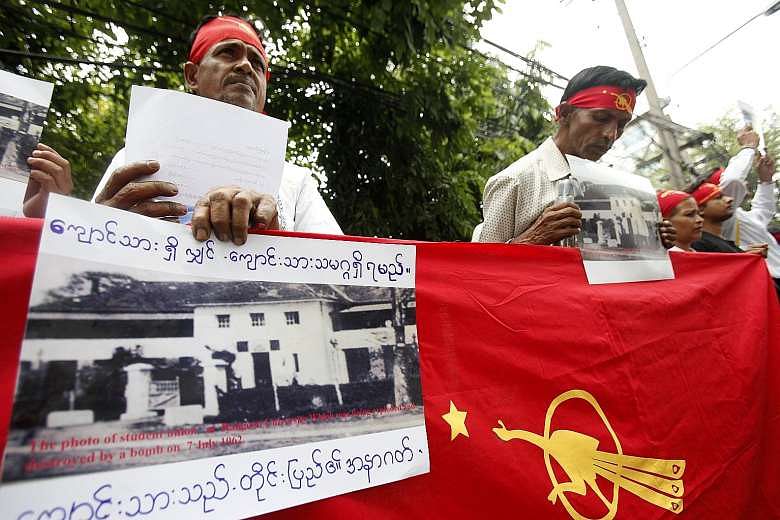
Mr Moe Thway, for example, left school after Grade 10, the equivalent of Secondary 4. He sold computers, worked at a Malaysian factory and ran a local coffee shop before founding Generation Wave, a network of political activists who banded together following mass protests in 2007.
Now, with Ms Suu Kyi's National League for Democracy (NLD) government in power, he is going back to school at the age of 36, as a first-year philosophy student at Yangon's Dagon University.
Over the years, July 7 has remained a key date, memorialised by exiles who demonstrated in front of Myanmar embassies abroad.
Yesterday - as on July 7 last year - political activists in white tops and dark longyi marked the fateful day by marching at the University of Yangon with roses and the student union's red peacock flag.
RESTRICTIONS ON STUDENTS?
The university reopened its doors to undergraduates in 2013. Its rector, Dr Pho Kaung, is eager to dispel talk that its students face special restrictions because of its historical legacy.
"We have no problems (with) politics because we are under a democratic government," he tells The Straits Times. "Students can freely do what they are interested in."
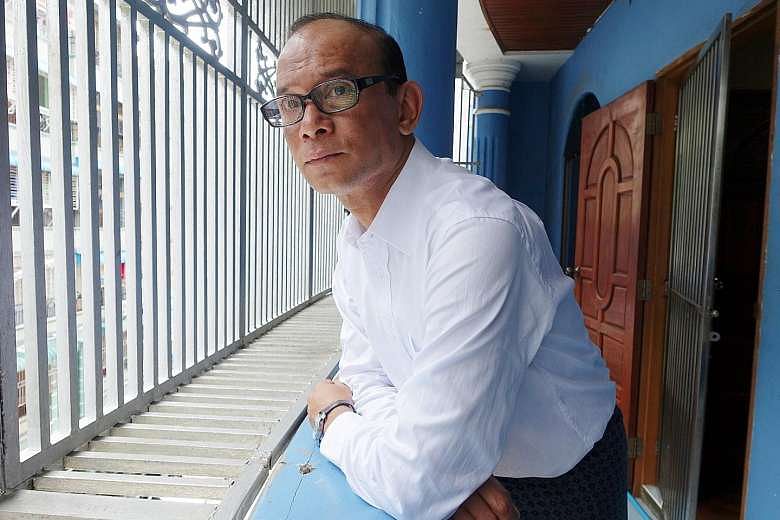
Some student union leaders disagree. They say they are not allowed to conduct a university-wide welcome for new undergraduates, for example, and they are trying now to persuade the administration to let the union hold a general election involving all students.
"When we ask officials, 'other universities can do this, why can't we?', they tell us 'it's completely different, this is the University of Yangon'," says Mr Win Lwin Aung.
Only about 50 students - out of 6,000 at the university - are members of the union now.
This lack of interest is due partly to past decades of political repression, observes fellow student union leader Moses Kyaw, a second-year anthropology student.
"When children go to university, their parents tell them: Just go there to study, don't join the students' union, and never go into politics," he says.
On a national scale, Myanmar's political transition has been less dramatic than expected. Even though NLD swept the 2015 elections, it has to contend with a military bloc that holds a guaranteed 25 per cent of parliamentary seats. The civilian government has no control over the defence, home affairs or border affairs ministries.
Ms Suu Kyi, who has spoken frequently about reconciling with the military, has so far avoided questioning its behaviour - even when a military crackdown in the troubled Rakhine state last year sparked international condemnation.
ACCOUNTING FOR THE FALLEN
The students' union rebuilding project now opens another window through which to revisit this dark past.
Weeds and columns of tall trees have taken over the compound of the demolished landmark - nondescript were it not for a security guard who shoos trespassers away. The only concrete structure there is a small memorial to Bo Aung Kyaw, a student leader killed during an anti-colonial protest in 1938.
The government - which had to suspend preliminary work in February because of opposition from activists who want the site preserved as a memorial - is now consulting with past and present student leaders.
One coordinator, former political prisoner Mya Aye, 51, says there are plans to account for all the individuals who died there, and to create a monument for them on site. Additional funds will be raised from the public to give them a stake in the project. And there will be a parallel effort to enshrine the independence of students' unions.
"We can't talk about Myanmar politics without mentioning student unions," he says. "The role of students has been very important since colonial times."
For other activists, such as Mr Moe Thway, the bigger point of this project is to have the military own up to its past conduct.
"This is not about shaming them or seeking revenge. But we need to let the future generations know what happened here," he says.
"This is an opportunity for the military, if it really wants to reconcile."
